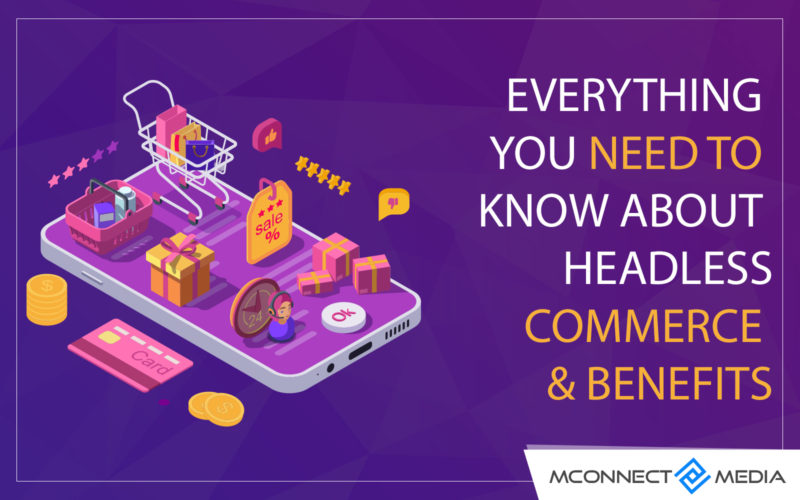Benefits of Headless Commerce
In today’s rapidly evolving digital landscape, businesses are constantly seeking innovative ways to enhance their online presence and provide seamless shopping experiences for their customers. One such solution that has gained significant traction is headless commerce. In this article, we will explore the benefits of headless commerce and how it can revolutionize your online business.
Improved Performance and Scalability
One of the key advantages of headless commerce is its ability to improve performance and scalability. With a traditional monolithic architecture, any changes or updates to the front end can impact the entire system, resulting in potential performance bottlenecks. However, with headless commerce, the front end and back end are decoupled, allowing for independent scaling and updates. This means that you can easily add new features or make changes to the frontend without affecting the backend, resulting in improved performance and scalability.
Flexibility and Customization
Headless commerce provides unparalleled flexibility and customization options for your online business. Since the front end and back end are separate, you have the freedom to choose the best technology stack for each component. This means that you can select the most suitable frontend framework, such as React or Angular, and pair it with a backend system that meets your specific requirements. This flexibility allows you to create a unique and tailored shopping experience for your customers, resulting in higher customer satisfaction and increased conversions.
Enhanced User Experience
With headless commerce, you can deliver a seamless and personalized user experience across multiple channels. By leveraging APIs, you can easily integrate your e-commerce platform with various touchpoints, such as mobile apps, voice assistants, or even IoT devices. This enables you to provide a consistent shopping experience regardless of the device or channel your customers choose. Additionally, headless commerce allows for faster page load times and improved performance, ensuring that your customers have a smooth and enjoyable shopping experience.
Streamlined Content Management
Another significant benefit of headless commerce is streamlined content management. With traditional e-commerce platforms, managing content across different channels can be a complex and time-consuming task. However, with headless commerce, you can centralize your content management efforts by using a dedicated content management system (CMS). This allows you to easily create, update, and publish content across multiple channels, ensuring consistency and saving valuable time and resources.
Increased Agility and Innovation
Headless commerce empowers businesses to be more agile and innovative in their approach. Since the front end and back end are decoupled, you can quickly iterate and experiment with new features or design changes without disrupting the entire system. This agility enables you to respond to market trends and customer demands more efficiently, giving you a competitive edge. Additionally, headless commerce allows for easy integration with third-party services and tools, further expanding your capabilities and fostering innovation.

In conclusion, headless commerce offers numerous benefits that can transform your online business. From improved performance and scalability to enhanced user experiences, streamlined content management, and increased agility, headless commerce provides the flexibility and customization needed to stay ahead in today’s digital landscape. By embracing this innovative approach, you can create a seamless and personalized shopping experience for your customers, ultimately driving growth and success.
Frequently Asked Questions
1. What is headless commerce?
Headless commerce refers to the decoupling of the front-end presentation layer from the back-end e-commerce functionality. It allows for greater flexibility and customization in designing user experiences.
2. What are the benefits of headless commerce?
The benefits of headless commerce include:
Flexibility to create unique user experiences
Ability to easily integrate with multiple platforms and devices
Improved website performance and speed
Efficient content management and updates
Seamless scalability and future-proofing
Enhanced personalization and targeting
Streamlined omnichannel experiences
Easy integration with third-party services and APIs
Reduced development time and costs
Increased agility and adaptability
3. Can headless commerce be used for any type of e-commerce business?
Yes, headless commerce can be used for any type of e-commerce business, regardless of its size or industry. It offers flexibility and customization options that can benefit a wide range of businesses.
4. Will implementing headless commerce require significant changes to my existing e-commerce infrastructure?
Implementing headless commerce may require some changes to your existing e-commerce infrastructure, especially in terms of separating the front-end and back-end systems. However, the benefits outweigh the initial effort, and the transition can be managed smoothly with proper planning and execution.
5. How does headless commerce improve website performance?
By decoupling the front-end presentation layer from the back-end e-commerce functionality, headless commerce allows for optimized performance. The separation enables faster loading times, improved page rendering, and efficient handling of user requests.
6. Can headless commerce help in providing personalized experiences to customers?
Yes, headless commerce enables businesses to deliver highly personalized experiences to customers. With the flexibility to design unique user interfaces and the ability to integrate with customer data platforms, businesses can leverage customer insights to provide tailored recommendations, offers, and content.
7. Is headless commerce suitable for mobile commerce?
Absolutely! Headless commerce is highly suitable for mobile commerce as it allows for seamless integration with mobile apps and responsive web design. It ensures consistent user experiences across different devices and platforms.
8. Can headless commerce be integrated with third-party services and APIs?
Yes, headless commerce is designed to easily integrate with third-party services and APIs. This allows businesses to leverage additional functionalities such as payment gateways, shipping providers, marketing tools, and more.
9. Does headless commerce support omnichannel experiences?
Yes, headless commerce supports omnichannel experiences by providing the flexibility to deliver consistent and personalized experiences across various touchpoints, including websites, mobile apps, social media platforms, voice assistants, and more.
10. Will implementing headless commerce require a large budget?
The cost of implementing headless commerce can vary depending on the complexity of your business requirements and the chosen technology stack. However, in the long run, headless commerce can help reduce development time and costs by enabling easier maintenance, scalability, and integration with new technologies.




